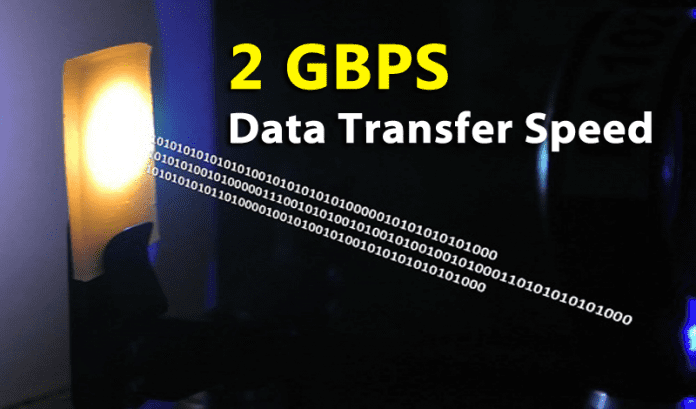Have you ever imagined your internet connection was 20 times faster than the current? This is what can actually happen in upcoming years. Recent reports says that by the year 2020 there will be more than 20 billion Internet of Things products online.
2 Gbps Data Transfer Rate Is Now Possible Using LED Light
Now if we look around the WiFi and Bluetooth, these are the two most widespread technologies for wireless data transfer. However, we can’t miss LiFi which is expected to be way faster than average Wi-Fi speeds.
Light Fidelity (Li-Fi) is a bidirectional, high-speed and fully networked wireless communication technology similar to Wi-Fi. It uses visible-light communication or infrared and near-ultraviolet instead of radio-frequency spectrum, part of optical wireless communications technology, which carries much more information and has been proposed as a solution to the RF-bandwidth limitations.
Researchers at the King Abdullah University of Science and Technology are working on an alternative to visible light communication. They managed to create a light bulb that transmits data 20 times faster compared to existing LiFi devices.
However, we all know that WiFi and LiFi basically operate using the higher frequencies which simply drop in the range of evident, IR and UV light. Hence, this visible light communication simply gives an innovative way just to consolidate information transfer with the help of information technologies.
So, it means that this type of visible light communication applications needs two-lead semiconductor light source, in simple language LEDs which produce white light as we all know. Basically, these are actually fabricated by combining the blue light-emitting diode with phosphorus, which simply turns some of this radiation into red light along with the green light. However, the process is time-consuming.
According to the researchers at King Abdullah University, they have found a way to overcome this limitation. They have created a “nanocrystalline material that rapidly makes white light out of blue light”, demonstrating data transmission speed up to 2GBPS.
In a blog post, the researcher team explained the whole process “The team created nanocrystals of cesium lead bromide that were roughly eight nanometers in size using a simple and cost-effective solution-based method that incorporated a conventional nitride phosphor. When illuminated by a blue laser light, the nanocrystals emitted green light while the nitride emitted red light. Together, these combined to create a warm white light.”
The team “were able to show that the optical processes in cesium lead bromide nanocrystals occur on a time-scale of roughly seven nanoseconds. This meant they could modulate the optical emission at a frequency of 491 Megahertz, 40 times faster than is possible using phosphorus, and transmit data at a rate of two billion bits per second.”
Researchers believe that in future the white light generated using semiconductor lasers can replace the LED white light bulbs for lighting.



